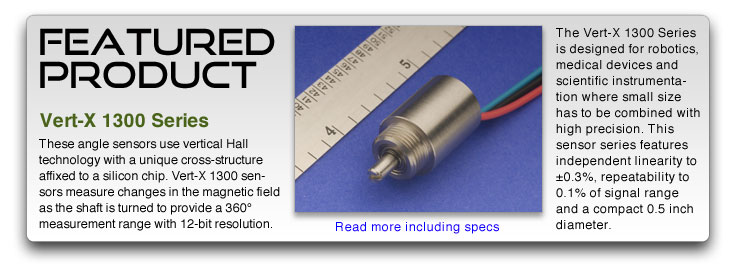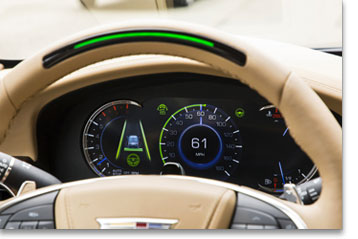
|
In this issue: Featured video: Cadillac’s Super Cruise To view newsletter in your browser click here. |
 |
| See the video of Cadillac's Super Cruise |
|
|
The 2018 Cadillac CT6 sedan will feature Super Cruise™. According to Cadillac’s Lead Development Engineer, Daryl Wilson, “it’s the first hands-free driving system for the highway.” Unlike other manufacturers, it uses infrared sensors and a camera to monitor the driver’s face and eyes to make sure attention is paid to the road, so it does not require the driver to put their hands on the steering wheel periodically. It is rated at SAE level 2 autonomy. |
|
|
|
| Knowing ingress standards can mean the difference between a sensor providing trouble-free service for its life or not. This is especially the case when any position or angle sensor is selected for an application that is used in environments where water, high-pressure wash-downs or dust may be present. There are two major standards for ingress protection. One is the IEC’s IP (ingress protection) standard 60529 and the other is NEMA (National Electronic Manufacturers Association) enclosure ratings. NEMA ratings are generally applied to equipment enclosures, so this article will focus on IP ratings. A position or angle sensor’s IP rating generally has two digits. The first one represents level of protection against incursion of solids and the second digit denotes protection against incursion of liquids. As the first digit increases from 0 to 6, IP rated protection increases against solids/ objects from 0 being no protection, to smaller and smaller objects the device must protect against incursion—with 5 representing dust protected and 6 being dust tight. The second IP digit uses analogous steps except for incursion of water. It runs from 0 being no protection to 8 representing continuous immersion in water. In between there is spraying water, splashing water, water jets (6.3 mm nozzle) and powerful water jets (12.5 mm nozzle). One applied example is Novotechnik’s KL Series of linear position sensors. The KL Series is rated at IP 65. This means it is protected against, not just limited, but, total dust ingress and it is protected against low pressure water jets in any direction. Another example is Novotechik’s RFD 4000 Series of touchless angle sensors. These sensors are rated at IP 69K. This device is protected against total dust ingress and it is protected against steam jet cleaning. The “K” represents protection against steam. This level is needed for food industry applications.
|
|||||||||||||||||||||||||||

 |
Application: Wind Turbine Blade Pitch Control
Microprocessor controlled pitch regulation ensures continuous and optimal adjustment of the angles of wind turbine blades in relation to the prevailing wind. |

|
If you have a question about position sensors for your specific application, Novotechnik engineers would be glad to speak with you. Contact us at Email Novotechnik [email protected] or call 800-667-7492. Please email suggestions for technical subjects you would like to suggest for this newsletter to this link: Newsletter Editor [email protected] |
